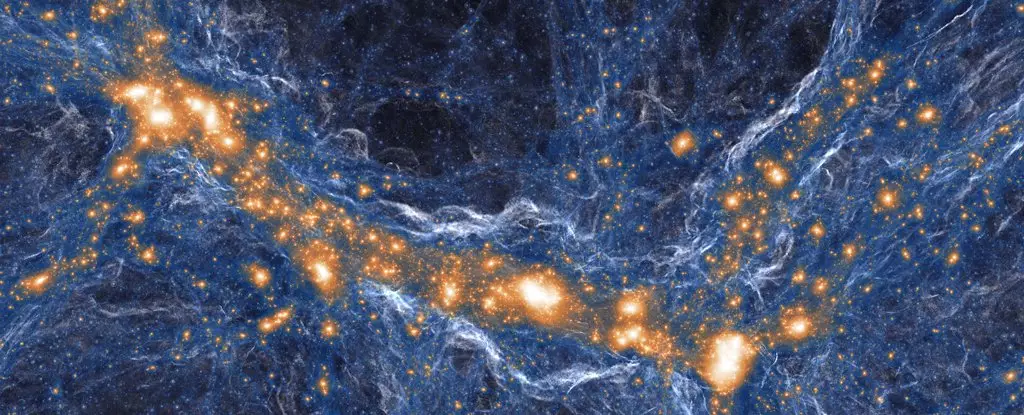The universe is a complex tapestry woven together by various forms of matter, and at its core lies a substance that is both intriguing and elusive: dark matter. The term “dark” does not imply that this matter is shrouded in darkness, but rather signifies its lack of interaction with electromagnetic radiation, or light. This very property differentiates dark matter from the ordinary matter that we encounter daily, which either emits, reflects, or absorbs light. Understanding how dark matter functions in the cosmos hinges on our ability to discern its relationship with light and other forms of matter, offering potential insights into the fundamental structure of our universe.
At first glance, dark matter appears to be a conspirator lurking in the quadrants of space, never revealed in the luminous signature of starlight. Its existence is inferred primarily through gravitational effects, such as the way galaxies rotate and how they cluster together. While typical matter consists of atoms that interact with light, dark matter is believed to be composed of particles that do not experience electromagnetic forces. This interaction—or lack thereof—forms the foundation of our comprehension of dark matter’s role in galactic structure and formation. However, this necessity for gravitational interaction alone can often lead to incomplete or inaccurate models.
In stark contrast to conventional matter, dark matter allows for a rather peculiar phenomenon: light bends in its presence, a phenomenon known as gravitational lensing. When light emitted from distant stars passes near a region with a significant concentration of dark matter, the gravitation pulls the light towards it, distorting the image of the distant object. This enables astronomers to map dark matter distributions across the universe, revealing a web-like structure that connects galaxies and galaxy clusters. Yet, despite these evidences, a critical question remains unresolved: do dark and ordinary matter interact in any capacity beyond gravity?
Recent studies have examined ultrafaint dwarf galaxies (UFDs) to explore the dynamics of dark matter further. UFDs are small, satellite galaxies with remarkably low luminosity, suggesting that they are predominantly composed of dark matter. Researchers have posited that if dark and regular matter interact solely through gravitational forces, star distributions within these galaxies would follow a specific pattern—more concentrated in the center and sparser toward the edges. However, if internal interactions occur, the spatial arrangement would portray a more uniform distribution.
This hypothesis led to computer simulations of both models being compared with observational data from six noted UFDs. The findings were noteworthy; the interactive model displayed a slightly better alignment with the observed data than the non-interactive model. This revelation sparked interest across the astrophysical community, indicating that dark matter may not be as inert as once presumed.
Redefining The Landscape of Cosmic Understanding
The significance of these findings cannot be overstated. If dark matter indeed interacts in ways beyond mere gravitational influence, it necessitates a reevaluation of existing models that have long dominated the field. Traditional conceptions of dark matter as a fundamentally passive entity may soon give way to a more nuanced understanding in which dark matter exhibits dynamic behavior that influences cosmic evolution.
Moreover, this newfound acknowledgment of potential interactions between dark and ordinary matter could herald the dawn of novel detection strategies. If dark matter particles can be observed through means other than gravitational effects, we may be equipped to gradually unveil this otherwise invisible aspect of the universe.
As we delve deeper into these enigmas, the mysteries of dark matter beckon humanity toward an exhilarating frontier in astrophysics. Will future explorations provide a clearer understanding of the intricate relationship between light and dark matter? What implications will this have on our fundamental understanding of the universe itself? Only time, research, and technological advancements will illuminate the path ahead, piecing together the celestial puzzles that lie before us.


Leave a Reply